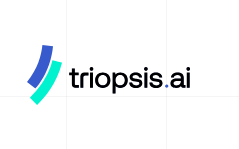The World Road Association PIARC has asked international consortium of academic and consultancy companies HDMGlobal to continue technical support, training and sales for the Highways Design and Maintenance (HDM) software, which is used to appraise investment in road networks across the world.
The extension is within the framework of the current concession from PIARC and precedes a major upgrade which will be led by the World Bank Group.
The upgrade will come at a time when countries are considering the necessity of transport networks that will improve resilience, enable economic recovery, and support the switch to low-carbon transport.
The HDM software was initially developed at the University of Birmingham as part of the International Study of Highway Development and Management, which was supported by UKAid.
Now on its fourth iteration (HDM-4), it delivers powerful analysis of the lifetime costs and benefits of road construction and maintenance, and is still used by the university in research investigating the how climate change influences road deterioration and maintenance requirements.
Dr Eric Stannard, CEO of HDMGlobal, commented: “Effective road networks can be the lifeblood for regions and entire continents. They are essential for connecting communities, enabling access to education and healthcare, and for trade and economic development. However, building a road is fraught with decisions, including the cost of maintenance and its impact on the environment, and the initial road-building alone can run into millions of pounds for each mile of road development.”
The influence of the HDM software is immense. It is regularly used in decisions over the funding of major infrastructure projects such as the 8,600km African North-South Corridor road network, and emerging transport corridors in South America. Its regular users include the World Bank Group, the Asian Development Bank (ADB), as well as governments and other organisations involved in road building.
Richard Martin Humphreys, Lead Transport Economist for the World Bank, commented: “The World Bank Group has been involved in the development of the HDM suite since its gestation and through its development, and we look forward to leading the upgrade of the HDM software. We will work in partnership with the United Kingdom Foreign, Commonwealth and Development Office, the Asian Development Bank, PIARC, and other key stakeholders, to ensure the HDM-4 model remains fit for purpose in 2022 and onwards.”
HDM-4 is the predominant tool used to appraise Asian Development Bank-funded road infrastructure projects. James Leather, Chief of Transport Sector Group at ADB, commented: “Increasingly, our client countries are looking for road sector support in areas that pose them the greatest challenges, such as washout during rainy seasons, enabling access for all citizens, road asset management, decarbonization, climate adaptation, and road safety. ADB is pleased to support the upgrade of HDM-4 to improve decision support in developing, managing and operating safe, low carbon and resilient road transport systems.”
Anne Joselin, Infrastructure Advisor for Transport Research at the UK’s Foreign, Commonwealth and Development Office, commented: “UKAid has supported HDM since the beginning, using UK expertise to ensure the billions spent annually on road investments in low-income countries take into account full life-cycle costing. UKAid is further supporting the upgrade of HDM4 to provide improved climate resilience and road safety capabilities to ensure it remains a relevant and valuable tool to help countries assess the full costs and benefits of road investments and make the software more accessible on modern tech platforms.”
Patrick Mallejacq, Secretary General of PIARC, commented: “PIARC is proud to support HDM-4 as it has done since the 1990s, as it is convinced that this tool is essential to ensure that road projects are well planned and that proper maintenance needs are identified. Since road transport usually represent about 80% of all inland transport, all advances that are made on that transport mode contribute to good service for users, to better allocation of funds, and to the achievement of Sustainable Development Goals.”
HDMGlobal, an Operating Division of University of Birmingham Enterprise, has run under the continuous management Dr Eric Stannard since 2005. Dr Stannard, who worked on the initial development of the software, now teaches HDM-4 on the Road Management course at the School of Civil Engineering.
(Picture – HDMGlobal)






















